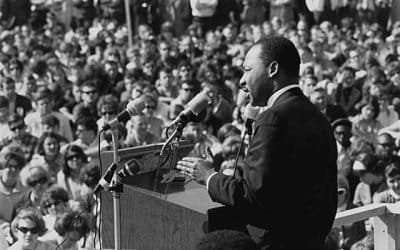The Lincoln Review, a Washington-based black think tank, published an article titled “What Does the Future Hold for Historically Black Colleges?” in its September/October 2007 edition. It recalled the experiences of Bill Maxwell, a St. Petersburg Times columnist and editorial board member, when in 2004 he took a huge pay cut to teach journalism at Stillman College in Tuscaloosa, Alabama.
He wanted to fulfill a promise he made to professors who taught him during the 1960s at Wiley College in Marshall, Texas, and Bethune-Cookman College in Daytona Beach, two historically black colleges. He was in for surprise and disappointment.
Professor Maxwell recalls his experiences in the St. Petersburg Times. The first column, “I had a dream” (www.sptimes.com/2007/05/13/Opinion/I_had_a_dream.shtml) discusses the non-academic environment at Stillman College. His first day in his English class, Maxwell had to shout to get the class to come to order. He assigned a 500-word essay. When he read the essays, he said, “During my 18 years of previous college teaching, I had never seen such poor writing — sentence fragments, run-on sentences, misspellings, wrong words and illogical word order.” One paper read: “In my high school, prejudism were bad and people feel like nothing.” In another: “Central High kids put there nose in other people concern.”
Maxwell says that only a few students bothered to take lecture notes. He had to teach basic grammar lessons and teach students how to use a dictionary, lessons that should have been learned in elementary or junior high school. The college issued free laptops to students who maintained a passing grade-point average. Some used their computers in class for text messaging. When Maxwell confronted the students, he was met with hostility. A few students left during class to make calls or send text messages. Two female professors were threatened by two male students when they were told to put away their laptops in class.
Professor Maxwell’s second column, “A dream lay dying” relates more of his experiences at Stillman (www.sptimes.com/2007/05/20/Opinion/A_dream_lay_dying.shtml). He recalls, “. . . nothing was more appalling than the students’ disregard for college property.” He recalls the time when the Tuscaloosa Fire Department had to put out trash can fires in King Hall, saying, “I was angry and embarrassed to see a team of white firefighters trying to save a dormitory named for the Rev. Martin Luther King Jr. that black students had trashed.” A white firefighter asked him, “Why do they do this to their own buildings?” Touring the building, Maxwell said that even without the fire it looked like a war zone. “Holes had been kicked and punched in the walls. Windows were broken, floors were scarred and most of the furniture was damaged. The two dorms routinely underwent major repairs after each semester.”
A week before leaving Stillman for good, Maxwell saw a group of male students who habitually hung out in front of King Hall. He approached the group and asked, “Why don’t you all hang out somewhere else?” “Who you talking to, old nigger?” one replied. Maxwell said, “You give the school a bad image out here.” They laughed and dismissed him with stylized waves of the arm.
At a time of gross discrimination, black colleges were crucial. Their graduates played a vital role in the unprecedented socioeconomic progress made by black Americans. Today, there’s a question about the value of most, but not all, black colleges. According to the Journal of Blacks in Higher Education, the 2005 graduation rates at black colleges ranged from a high of 77 percent at Spelman College to a low of 7 percent at the University of the District of Columbia. Only seven black colleges, out of 53 listed, had a graduation rate of higher than 50 percent. Given these numbers, the preparation and performance of students at most black colleges, one has ask whether these colleges have outlived their usefulness.



